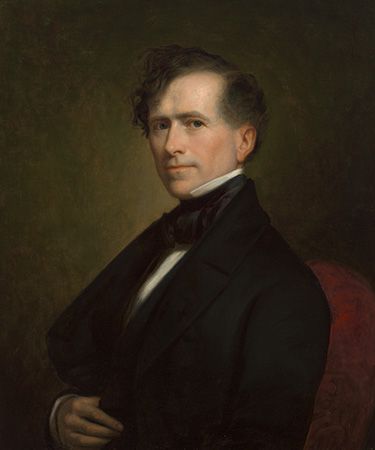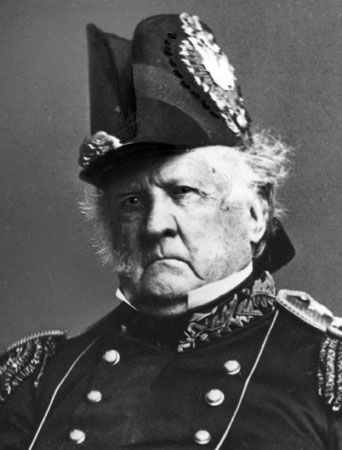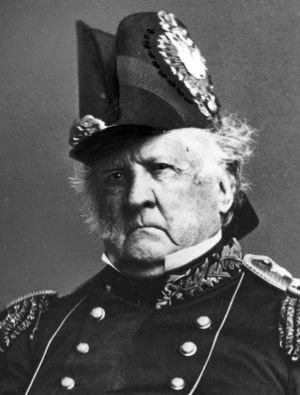United States presidential election of 1852
Our editors will review what you’ve submitted and determine whether to revise the article.
- Date:
- November 2, 1852
United States presidential election of 1852, American presidential election held on November 2, 1852, in which Democrat Franklin Pierce defeated Whig Winfield Scott.
At a glance: the election of 1852
The Whig Party’s last hurrah
The election of 1852 was contested in the aftermath of the Compromise of 1850, a series of measures passed by the U.S. Congress in an effort to settle outstanding slavery issues and to avert the threat of dissolution of the Union. The campaign itself would be marked by divisions within the political parties over the issue of slavery and would be the last presidential election in which the Whigs participated.

Both parties held conventions in June in Baltimore, Maryland. After a deadlock developed among Democratic supporters of the leading presidential contenders—Lewis Cass, Stephen A. Douglas, William L. Marcy, and James Buchanan—a coalition of New England and Southern delegates proposed the relatively unknown Franklin Pierce, who was nominated on the 49th ballot. Sen. William R. King was chosen as the Democrats’ vice presidential candidate. King, a Buchanan backer, was offered the nomination in an effort to placate Buchanan’s supporters. The Whig Party faced similar difficulty in reaching the required majority for a nomination but on the 53rd ballot settled on Winfield Scott, the foremost American military figure between the Revolution and the Civil War, over Pres. Millard Fillmore and prominent Massachusetts politician Daniel Webster. Both parties’ platforms endorsed and promised to adhere to the Compromise of 1850, with the Democrats more unified in their support and additionally stressing their traditional beliefs in limited government. The campaigns followed the path that had been set out in previous elections, utilizing handbills, parades, and rallies—as well as direct attacks on the opposition. Both candidates were accused of being abolitionist and anti-Catholic.
The election was marked by low voter turnout—the lowest of any between 1840 and 1860. The North and the South had become so polarized over the slavery issue that the Whigs were no longer able to make a broad national appeal on the basis of “unalterable attachment to the Constitution and the Union.” Despite—and perhaps in part owing to—the Whigs’ best efforts to endear Scott to Catholic and immigrant voters, he won only 42 electoral votes to Pierce’s 254, as many Southern Whigs flocked to the banner of the states’ rights-oriented Democratic Party. At the time of his election, Pierce, age 47, was the youngest man to be elected to the U.S. presidency. His vice president, King, was too ill with tuberculosis to attend the inauguration in March 1853. Taking the oath of office in Cuba, where he had gone in search of a cure, King became the only American vice president to be sworn in on foreign soil. He returned to Alabama a few weeks later, determined to assume his responsibilities, but he died the day after he reached his plantation.
For the results of the previous election, see United States presidential election of 1848. For the results of the subsequent election, see United States presidential election of 1856.
Results of the 1852 election
The results of the 1852 U.S. presidential election are provided in the table.
| presidential candidate | political party | electoral votes | popular votes |
|---|---|---|---|
| Sources: Electoral and popular vote totals based on data from the United States Office of the Federal Register and Congressional Quarterly's Guide to U.S. Elections, 4th ed. (2001). | |||
| Franklin Pierce | Democratic | 254 | 1,601,274 |
| Winfield Scott | Whig | 42 | 1,386,580 |
| John Parker Hale | Free Soil | 155,210 | |






















